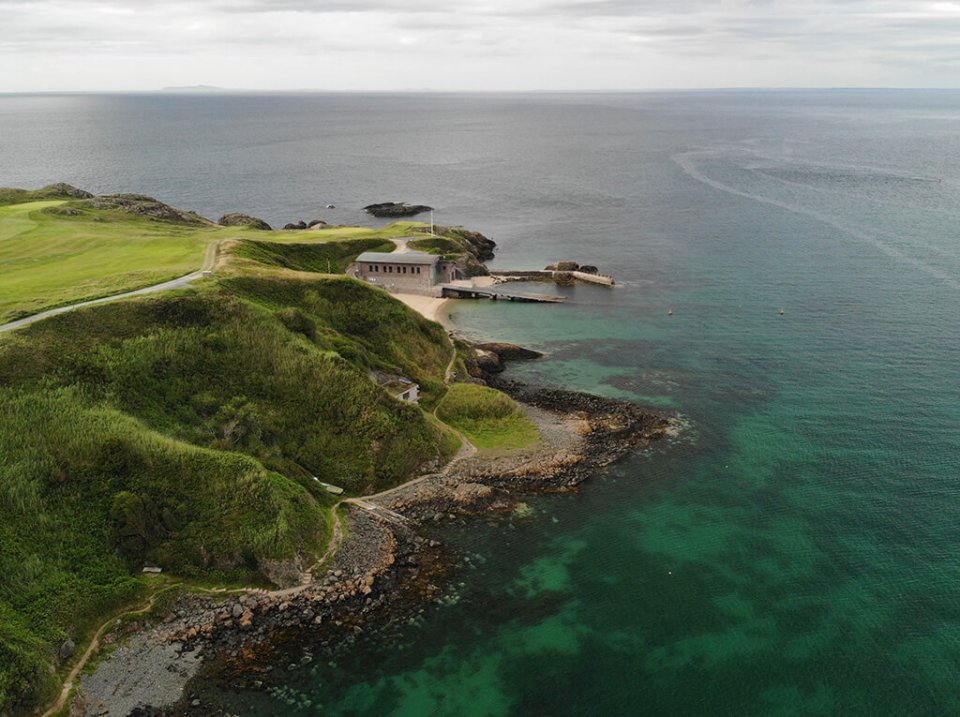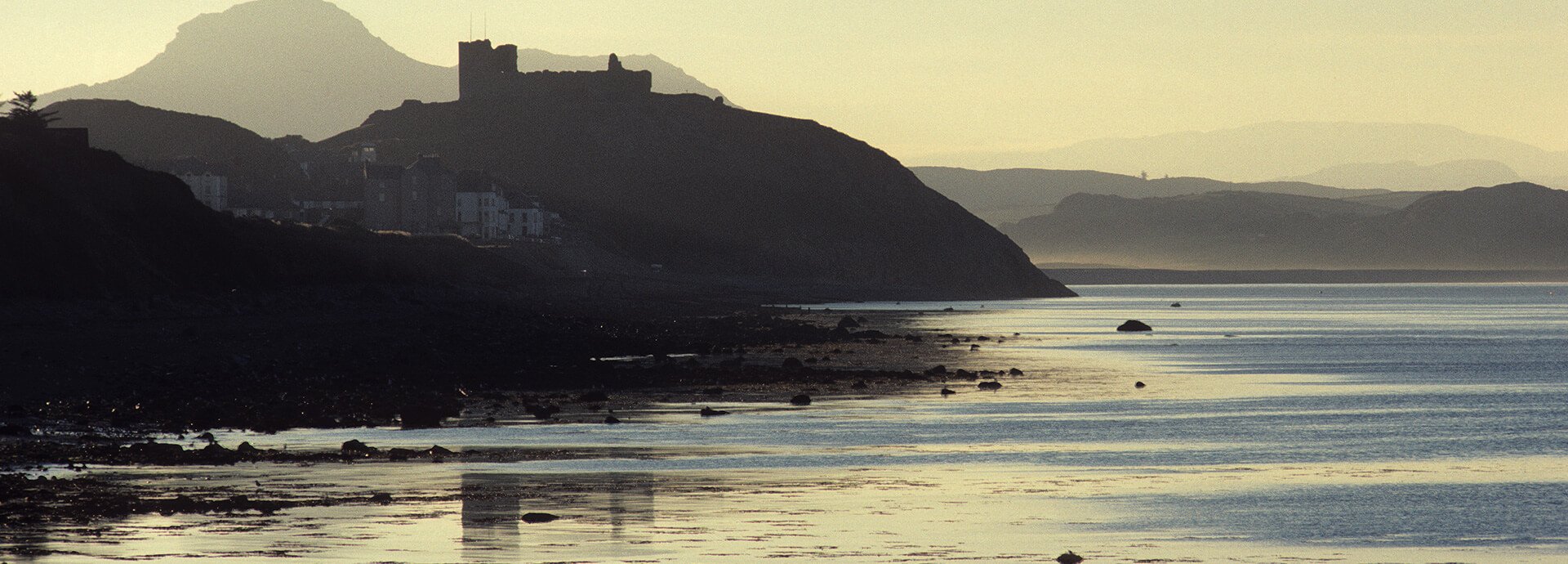Large shallow inlets and bays
Large shallow inlets and bays are usually defined as large indentations of the coast where the influence of freshwater is generally limited. They are generally more sheltered from wave action than the open coast and are relatively shallow, usually averaging less than 30m in depth.
The large shallow inlet and bay of Pen Llŷn a’r Sarnau is the embayment known as Tremadog Bay at the northern end of Cardigan Bay. Tremadog Bay is a relatively shallow embayment with an average depth of less than 20m. It is also an unusual embayment in terms of the nature and variety of its seabed and coastal habitats and wildlife, as well as in terms of some of its physical characteristics.
Much of the coast of Tremadog Bay is composed of sandy or mixed sediment with rocky areas at a few locations. Underwater, the seabed is largely composed of different types of sediment with patches of rocky reefs spread throughout part of the bay and around the St. Tudwal Islands. There is a general trend of more gravely sediments in the north west of the bay, areas of mud and muddy sand in the central and western areas and other areas dominated by fine through to coarse sandy sediment. Overall within the bay the distribution of sediments is patchy and variable with a mosaic of sediments (mud, sand and gravel) including pebbles and patches of boulders and cobbles as well as bedrock reef.
Tremadog Bay supports a tremendous variety of marine life some of which is exceptionally abundant and unusual. Along the shore, areas of mixed sediment (sand, gravel, cobbles and boulders) support extensive beds of seaweed, honeycomb worm reefs (built and inhabited by the worm Sabellaria alveolata) and rock pools. In contrast muddy sand and gravel in other locations supports an unusual community of carpet shells and exposures of clay colonised by piddocks (an unusual shellfish that can bore into and live in soft rock, clay and peat). Underwater, the sediment habitats provide a home for a myriad of different animals, with communities dominated by burrowing species (molluscs, worms, small crustaceans, echinoderms) as well as animals and plants living on the seabed surface. The number and variety of species, as well as the abundance of individuals varies depending on the sediment type. Some of the sediment supports a staggering 80 species and around 1500 individuals in an area roughly the size of an A4 piece of paper. To date, survey data shows the highest diversity of species occurring in the northwest of the bay, and the highest abundance in the northeast of the bay.
The wildlife communities of the bay, particularly those within the sediment habitat provide an extremely productive and important food resource for other species. Parts of Tremadog Bay act as a nursery area for juvenile fish species and are also thought to provide habitat that is an important nursery area for lobster.

